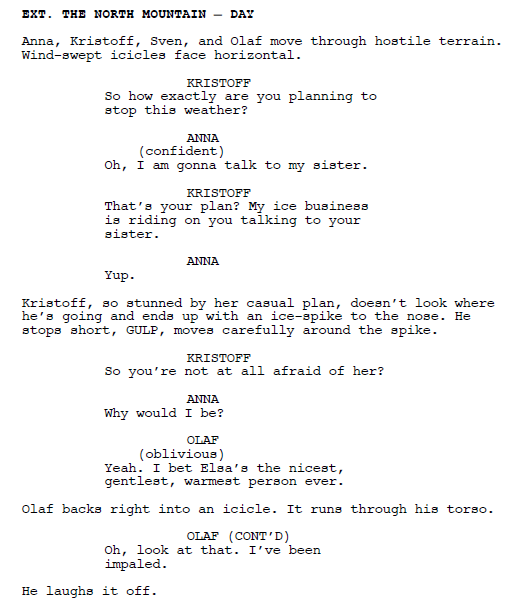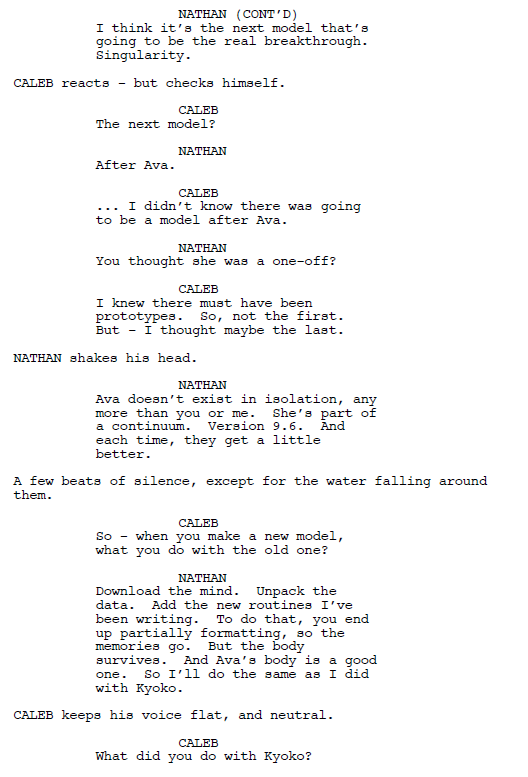10 out of '10s: Our Favorite Scripts of the Decade
Reflecting on it, the 2010s were a banner year for writerly craft and innovation, especially within the realms of television and film.
As we sign off for the decade, we’d like to give you one final list of scripts we recommend—some of the scripts that defined the past 3,650 days for us.
Narrowing down ten years packed full of subverted genre tropes, increased representation, and sincere, deeply memorable characters proved to be quite the undertaking.
But, if you’re looking to improve your storytelling sensibility (and, as a writer, shouldn’t you always be looking to improve this?) here are 10 scripts that deepened our feelings, gave us a better understanding of the craft and changed our perception of what is possible in writing for the screen.
BROAD CITY “The Last Supper” (2014)
Written by Abbi Jacobson & Ilana Glazer
How amazing it felt to meet Abbi and Ilana in all their absurd, gross, sweet and ultimately side-splitting pursuits. Their show provides a benchmark for writing about buddies. The library has every single script from Broad City, and they are a great study in two-person banter. Take, for example, this excerpt from the season 1 finale, “The Last Supper,” where Ilana tries to shrug off a serious shellfish allergy in order to celebrate Abbi on her birthday. One’s batty and hedonistic. The other one’s just trying to keep up. Their dynamic opens the door for more endearing, outrageous lady duos to follow:
20TH CENTURY WOMEN (2016)
Written and Directed by Mike Mills
The concept —two eccentric young women and one handy man helping a single mother raise her 15-year-old son in 1970s Santa Barbara—is immediately warm and personal. Mike Mills’ loving tribute to his own mother and sister is an excellent study in character development. The script uses narrated flashbacks to tell each main character’s unique story, bringing us further into their world and allowing us to care more deeply about them. This different take on exposition makes us think about how we hold onto key facts and images that we know about certain people, archiving them away in our own mental repositories.
ATLANTA “Streets on Lock” (2016)
Written by Stephen Glover
Atlanta focuses on the daily life of a dropout trying to help his cousin in his rap career. The series specializes in observational humor, presenting funny situations, but slowly revealing the bleak, unjust underbelly of truth within them. Take, for example, this night-in-the-slammer episode penned by Steven Glover. Much like a great play, the action takes place mostly within a holding cell. The story features fully realized supporting players and miscreants, but right when we start laughing, everything takes a sour turn, causing us to reflect on what we’re really laughing at:
FROZEN (2013)
Screenplay by Jennifer Lee
Story by Jennifer Lee, Chris Buck and Shane Morris
Inspired by “The Snow Queen” by Hans Christian Anderson
When Disney Animation took an opportunity to subvert its rigidly established story and character tropes, we found ourselves cheering for (and incessantly singing the songs of) a character that in any other Disney movie would have been the villain. Jennifer Lee’s script is worth reading for its endearing ensemble of characters: the mountain man who talks to his reindeer sidekick, a snowman who can talk, a shy, repressed queen with ice powers and her little sister, a regular princess who saves the day simply by believing in all the misfits around her.
POSE “Pilot” (2018)
Written by Ryan Murphy & Brad Falchuk & Steven Canals
One of the best things you can do for yourself if you want to write for television is visit the library and read Steven Canals’ earlier draft of the Pose pilot, then read the shooting draft to see how it evolved when producers became attached. It’s fascinating to see how the protagonist, Blanca, evolves. As a trans woman of color with HIV/AIDS in 1980s New York, she continues to be cast out and spit on by the world around her, but she decides to lead with love and support (where she could very easily go down a different path and destruct). In the ballroom scene and, as mother of House of Evangelista, she’s heroism embodied.
WINTER’S BONE (2010)
Screenplay Debra Granik & Anne Rosellini
Based on the Novel by Daniel Woodrell
The 2010s were a turning point for female protagonists in many ways. For this librarian, a major shift was felt at the beginning of the decade with Winter’s Bone. When her dad goes missing and puts the family house up for his bond, Ree Dolly, the film’s protagonist, is forced to single-handedly fight for her family’s very survival. She’s a 17-year-old girl placed in a situation that requires the tenacity and bravery usually reserved (on screen, that is) for men in their 30s. The script by Debra Granik and Anne Rosellini is filled with really specific dialogue and mountain speak, which just makes everything more vivid. I like this scene with Ree and her uncle Teardrop, who seems like a horrible person, until he saves her when she gets her ass kicked and really needs an ally.
ONE DAY AT A TIME “Not Yet” (2018)
Written by Gloria Calderon-Kellett & Mike Royce
I haven’t been shy on this blog about my love of One Day at a Time. The entire series is well worth your exploration, but I am particularly fond of this episode “Not Yet,” the season 2 finale written by creators Gloria Calderon-Kellett and Mike Royce. Without spoilers, this episode unfurls like a stage play, allowing each character to talk at length about how they feel. The show is a perfect blend of humor and heart, belly laughs and ugly tears. I’m sharing this excerpt because I think it exemplifies the notion of finding hilarity in a scary, tragic family situation. How does a writer accomplish this? With sensitively developed characters and the courage to be brutally honest.
EX MACHINA (2015)
Written and Directed by Alex Garland
This decade, Alex Garland helped me to fall in love with science-fiction. Before films like Ex Machina or 2010’s Never Let Me Go, I saw entities like clones or artificial intelligence as things to be feared. What fun it was in Ex Machina, specifically, to find myself empathizing and caring about an A.I—a machine—as a sentient character. In watching robots (or clones) get abused by people, you come to realize what’s really to be feared… technology in the hands of mankind. I’m sharing this excerpt from Ex Machina because I think it’s a great illustration of getting your reader/audience to care about what happens next.
MAD MEN “The Suitcase” (2010)
Written by Matthew Weiner
At the beginning of the decade, Mad Men was revered for its “slow burn” mode of storytelling. One of my favorite episodes of this show is “The Suitcase.” To avoid the phone call that someone very close to him has passed away, protagonist Don Draper hurls himself into his work and ends up going drinking with…. His co-worker and former secretary Peggy. The ensuing episode is a great example of two unlikely characters opening up with each other and finding a weird, unexpected solace. Where Don carelessly goes to bed with, dates or marries the next pretty girl, here with Peggy, he shares something slightly more special and transformative: his feelings.
SHORT TERM 12 (2013)
Written and Directed by Destin Daniel Cretton
Finally, there's the screenplay for Short Term 12. Inspired by his own experience working in a group home for teens, Destin Cretton's script is loaded with genuine emotion and nonstop empathy. Not unlike the aforementioned Pose, it's about characters who find solace and community together outside their rough home lives. Starting with the main character, Grace, who happens to be a supervisor at the home, it's such a great script to read for guidance in how characters grow to open-up and bond with each other. Many of the characters, including Grace, begin the story abrasive, defensive or close-off, but slowly pivot to reveal the trauma and pain underneath, which is the first step toward healing from it.










